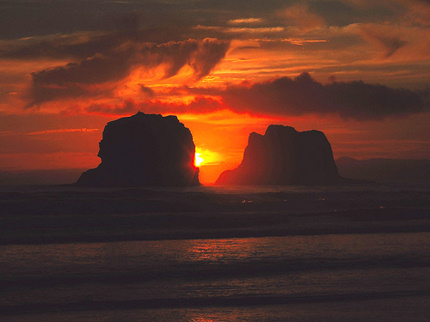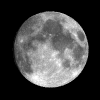Courtesy of EarthSky
A Clear Voice for Science
www.EarthSky.org
 Comet Hartley 2 might brighten to binocular object by late September 2010
Comet Hartley 2 might brighten to binocular object by late September 2010
 Does the sun set faster around the time of an equinox?
Does the sun set faster around the time of an equinox?
The answer is yes. The fastest sunsets (and sunrises) occur at or near the equinoxes. What’s more, the slowest sunsets (and sunrises) occur at or near the solstices. This is true whether you live in the northern or southern hemisphere. By the way, when we say sunset here, we are talking about the actual number of minutes it takes for the body of the sun to sink below the western horizon.
When the sun sets due west – as it does on the day of an equinox – the sun hits the horizon at the steepest possible angle, which hastens the duration of sunset. Although the sunset duration varies by latitude, the equinox sun sets in about 2 and 3/4 minutes at 40 degrees latitude (Denver, Philadelphia). Bright star near the moon? It’s Jupiter – closer on September 20 than until 2022
On the solstices, the sun sets farthest north or farthest south of due west. The farther the sun sets from due west, the shallower the angle of the setting sun. That means a longer duration for sunset. At 40 degrees latitude, the solstice sun sets in roughly 3 and 1/3 minutes.
In 2010 the northern hemisphere’s autumn equinox falls on September 23, at 3:09 Universal Time. In North America, that translates to September 22, at 11:09 p.m. Eastern Time, 10:09 p.m. Central Time, 9:09 p.m. Mountain Time and 8:09 p.m. Pacific Time. Yes, the fastest sunsets of the year are happening now, around the time of the equinox.
Everything you need to know about the autumnal equinox of 2010
Photo of equinox sunset taken from David LeRoy Lyles photostream.
Written by Bruce McClure
Astronomy Picture of the Day from NASA/JPL
U.S. Naval Observator Astronomical Information center
The York County Astronomical Society
 Print This Post
Print This Post








